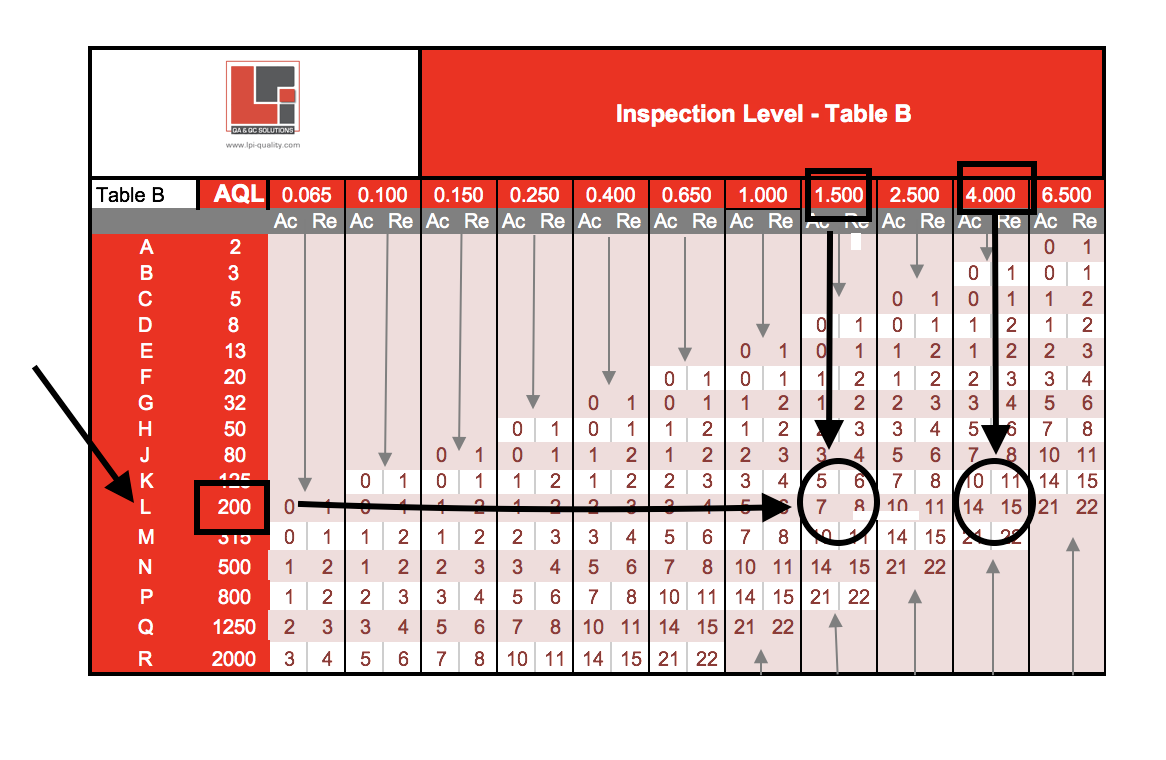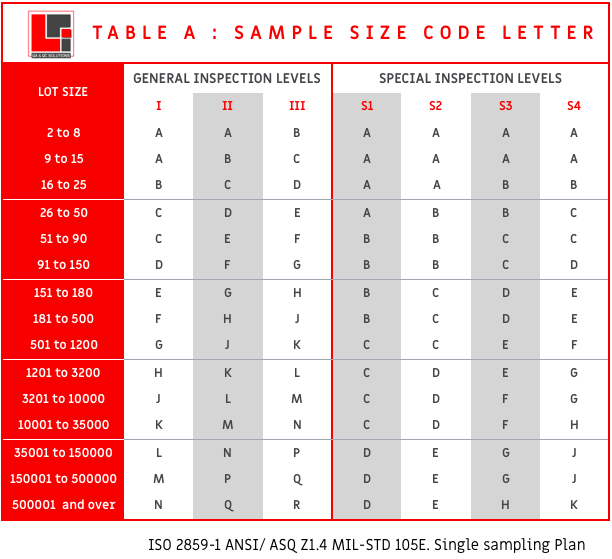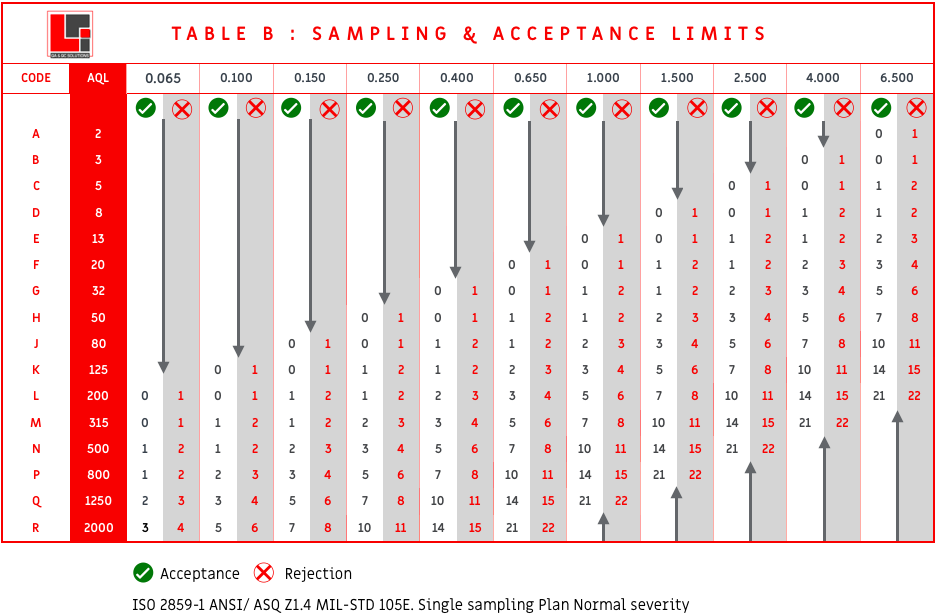AQL Stands for “Acceptable Quality Level". It is a random sampling method.
The AQL standard enables a good overview of the quality level without inspecting 100% of the production.
Even though it involves a complex statistics'sampling method, it basically provides an optimized level of confidence versus a defined number of checked pieces
AQL tables also allow you to determine the maximum number of unsatisfactory pieces for three different types of defects, which are sorted by the severity of the consequences they have.
Commonly, these defects can be:
- Critical > The product is unsafe or hazardous for the end user or/and contravenes mandatory regulations.
- Major > The product's usage is affected, and/or the defects are perceivable enough to affect the product's marketability or sellability.
- Minor > Here, the sellability is not directly compromised but that kind of defects should be mentioned, counted and limited.
AQL Sampling Simulator
Sample Size: 200 units
Accept Point: 0
Reject Point: 0
Sample Size: 200 units
Accept Point: 10
Reject Point: 11
Sample Size: 200 units
Accept Point: 14
Reject Point: 15
It starts with two already filled in tables, A and B.
Table A determines a letter based on two factors:
- Production quantity
Inspection level which will be applied
> in level I fewer pieces will be checked, in level III, more pieces will be checked.

Let’s say we have a production (*Lot or Batch Size) of 5,000 pieces.
You can see here that on the standard level II, the matching letter is L.
Once you know the letter, you can use Table B.
You can see there, in the left column that for the letter L the corresponding sampling size is 200 pieces.

Ac – Acceptance number
Re – Rejection number
Then we look at the figures in this row.
They correspond to the different percentages for Critical, Major, and Minor Defects.
In this example, let’s say the client is buying high-value products packaging. He sets the limit at 0 Critical Defects, 1.5% of Major Defects, and 4% of Minor Defects.
Based on that, one can determine that for a sampling size of 200 pieces with an AQL of 1.5 :
• Up to 7 defective pieces will represent an "acceptable number".
• 8 defective pieces, or more, will lead to the sample failing inspection. Thus, all the products from the lot will be rejected.
In other words, to comply with AQL 1.5, no more than 7 units from that sample size may fail inspection.
For suppliers, there is a potential risk of having their production rejected despite meeting the level of quality requested. Statistically, however, the probability of finding 8 or more defective pieces out of 200 inspected, is rather low, if the total percentage of defective pieces is below 1.5%.
On the other hand, there is also a risk that an AQL based inspection will report the sample as “passed”. But actually, the proportion of defects in the inspected batch really is proportionally smaller than what it is in the entire production. This is what we call “the buyer’s risk”. It should not be underestimated.
The AQL standard favors suppliers as it takes into account their risk more extensively than the buyer’s risk. Therefore, when an AQL result is failed, clients have all the legitimacy to ask their suppliers to rework the production and pay for reinspection.
The larger the sample size is, the lower the margin of error. The inspection result should reflect more accurately the overall quality of the production, the upper we climb on the level ladder. ( Level III being the more accurate )
Therefore, if, after various orders, you find that your supplier’s quality has consistently been good, you may consider lowering the sampling size to Level I. On the contrary, if the last report showed that the production failed to meet the requirements, it makes sense to increase the check to Level III.
As for the severity, for regular consumer products, the standard tolerates 0 Critical Defects, 2.5% of Major Defects, and 4% of Minor Defects. The buyer may choose a different level depending on the industry, product’s value, and the type of end users. It is essential to communicate about these AQL levels with the factory prior to placing an order, as well as to refer to them in the Purchase Order or contract.


